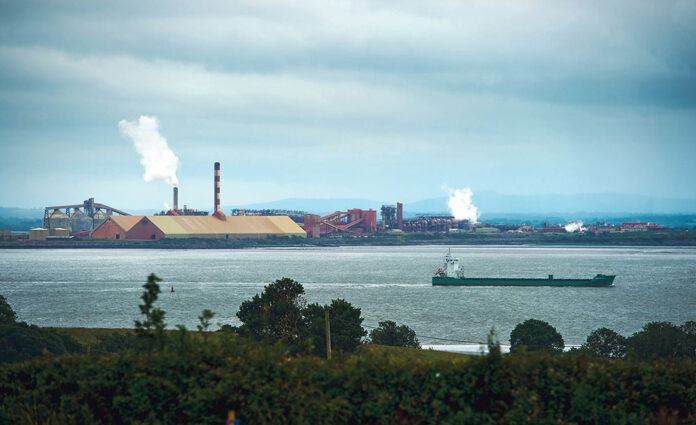Futureproof Clare was among the 20 groups that participated in a national protest this Tuesday to try to stop planning approval for more rock-blasting at the bauxite refining site at Rusal Aughinish Alumina plant in Co Limerick.
The groups who have come together in protest at Rusal’s proposed move include Futureproof Clare, Friends of the Irish Environment, Slí Eile, and the Cappagh Farmers Support Group, whose founder Pat Geoghegan has long campaigned against the facility.
Tim Hannon of Futureproof Clare said the group is “extremely determined” to stop the blasting from going ahead at the plant.
He was speaking at a press event in Dublin on Tuesday to discuss a planning application by Aughinish Alumina to expand its disposal site for the ‘red mud’ created as a by-product from the bauxite refining process.
Mr Hannon told the event at the Teachers Club in Dublin, which heard from academic experts regarding the potential pollutant effects of bauxite refineries, that the Aughinish facility “towers like a monster over the surrounding area”.
The event was followed by a small protest outside the gates of Dáil Éireann attended by a number of TDs.
Two large Bauxite Residue Disposal Areas (BRDA) totalling an estimated 450 acres are akin are located on the site of the largest European alumina facility located near the Shannon Estuary.
In a submission to the EPA, the company stated the bauxite residue undergoes partial neutralisation by atmospheric carbonation through mud farming, which produces a residue of pH-cl1.5 that is non-hazardous and is suitable fur remediation and re-vegetation.
The company has submitted a Strategic Infrastructure planning application to An Bord Pleanála, seeking a major expansion of the BRDA, which has prompted major concerns from Futureproof Clare and local environmental campaigners.
The site is close to two designated conservation sites, the Lower River Shannon special area of conservation and River Shannon and River Fergus Estuaries special protection area.
Documents submitted to An Bord Pleanála by Town Planning Consultants Tom Phillips and Associates outlined the plant would cease operations in 2030 “based on current production levels” of 1.9 million tonnes of alumina a year, if the proposed development isn’t approved.
The proposed BRDA Raise Development will provide an additional estimated 8.04 million m3 of void for bauxite residue disposal, which represents an additional c. 13.1 million tonnes of bauxite residue disposal.
For every tonne of aluminium created at the plant, it is estimated about two tonnes of ‘red mud’ is created as a by-product.
A decision on that application had been due for delivery by mid-June but remains undecided.
Residents living near the Aughinish facility were informed by letter the company would be carrying out a blast at “its permitted on-site quarry borrow pit between 11 am and 2pm on Tuesday.
Access to the Aughinish nature trails and car park were temporarily closed until 2pm on Tuesday.
In its submission to the EPA, the company stated: “The Aughinish facility operates in compliance with stringent environmental regulations and continued monitoring by the EPA.
It represents the highest standards in excellence in alumina production.
“This is demonstrated by the findings of the Commodity Research Unit (CRU) which ranks the AAL facility within the top 10% of alumina refineries globally with respect to minimising carbon emissions.
“AAL are currently operating with Best Available Technologies when compared to industry standard. Globally speaking, AAL is amongst the highest-ranking Alumina refineries in terms of energy efficiency and has the fourth lowest alumina plant carbon footprint worldwide at 0.516 tCO2/t product versus a world average of 1.29 tCO2/t product, amongst 89 alumina refineries. AAL has the lowest carbon footprint in the world for refining bauxite that requires high temperature digestion, which is the most used technology today.”
A €5.2 million EPA-led inquiry on report into the animal and human health problems in West Limerick concluded all available data indicated that the levels of potential pollutants in the Askeaton area in the 1995-1998 period were below those likely to cause harm to the environment generally, to animals or to humans.
Furthermore, the available information suggests that this was also the position since the mid-1980s at least.
The company was contacted for a comment on Wednesday but did not respond.
East Clare correspondent, Dan Danaher is a journalism graduate of Rathmines and UL. He has won numerous awards for special investigations on health, justice, environment, and reports on news, agriculture, disability, mental health and community.


